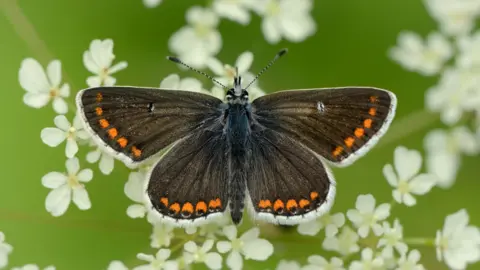Butterfly conservation 'success story' to continue
 Getty Images
Getty ImagesWork to boost butterfly species at a nature reserve will continue its "success story" thanks to a new lease.
Butterfly Conservation's work at Magdalen Hill Down, near Winchester in Hampshire, has created a home for more than 30 species of butterfly over the last 30 years.
Church Commisioners for England, which owns the land, has brought two leases together to form a new agreement, so the non-profit organisation can continue its work on the 46-hectare (113-acre) site.
The area is home to the largest population of Brown Argus butterflies in Hampshire.
Dorset-based Butterfly Conservation has also reversed a decline in the area's Adonis Blue butterflies, a species native to chalk environments, through scrub clearance and grazing management.
Cameron McKillop, of Church Commisioners for England, said: "We are always looking for parts of our land that can be harnessed to promote nature recovery and this agreement means this local success story will continue."
 Getty Images
Getty ImagesWork at the site, which sits within South Downs National Park, is supported by a grant-funded Higher Level Countryside Stewardship Scheme and Hampshire County Council.
Julian Bendle, from Butterfly Conservation, said: "The site has been transformed into one of Hampshire's richest chalk grassland butterfly sites, with more than 30 different butterfly species recorded annually, including many rarities.
"Restoration work on one area of the site has transformed it from intensive arable production to flower-rich grassland and it is now one of the top ten sites in the county for many butterfly species."
You can follow BBC Hampshire & Isle of Wight on Facebook, X (Twitter), or Instagram.
